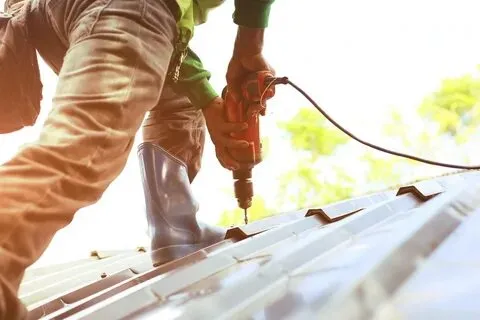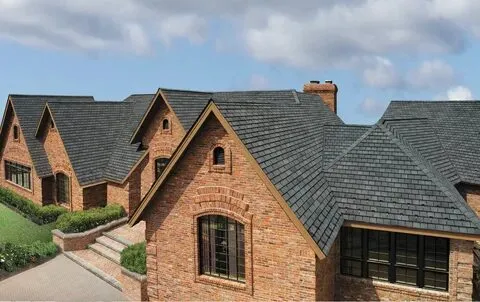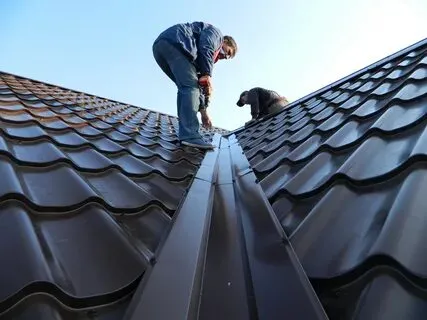When it comes to industrial roofing, durability and resilience are key factors in ensuring the longevity and functionality of your building. From withstanding extreme weather conditions to ensuring structural integrity, industrial roofs must be able to navigate a range of challenges. In this article, we will explore the world of roofing resilience and the importance of proper repair and maintenance in keeping your industrial roof in top condition. Join us as we delve into the complexities of industrial roof repair and discover how to safeguard your building against the elements.
Heading 1: Understanding Common Industrial Roofing Issues
Industrial roofing can often present a unique set of challenges that require timely and effective solutions. From leaks and cracks to damage caused by weather elements, it’s crucial to understand common issues that may arise in order to properly navigate industrial roof repair.
One major concern for industrial roofs is poor insulation, which can lead to increased energy costs and discomfort for employees. Additionally, ponding water on flat roofs can cause structural damage over time. Regular inspections and maintenance can help identify these issues early on and prevent costly repairs down the line.

Heading 2: Tips for Choosing the Right Roofing Materials
When it comes to choosing the right roofing materials for your industrial building, there are several factors to consider. One important aspect to keep in mind is the climate in which your building is located. If you’re in an area that experiences extreme weather conditions, such as heavy rain or strong winds, you’ll want to opt for materials that are durable and can withstand these elements. Metal roofing, for example, is known for its resilience and longevity, making it a popular choice for industrial buildings in harsh climates.
Another factor to consider when selecting roofing materials is the cost. While it’s important to choose materials that are affordable, it’s equally important to prioritize quality and durability. Investing in high-quality materials may cost more upfront, but it can save you money in the long run by reducing the need for frequent repairs and replacements. Additionally, consider the aesthetic appeal of the materials you choose, as the roof is a prominent feature of your building’s exterior. Take into account the color, texture, and style of the materials to ensure they complement the overall design of your industrial building.

Heading 3: Key Factors to Consider Before Starting Roof Repair
When considering embarking on a roof repair project for your industrial building, it is crucial to take into account several key factors to ensure the success and longevity of the repairs. One of the primary considerations is the material of the roof itself. Understanding the material will help you assess the extent of the damage and determine the best course of action for repairs.
Another important factor to consider is the weather conditions in your area. Severe weather, such as storms or extreme temperatures, can have a significant impact on the durability of your roof. It is essential to factor in these conditions when planning for repairs to ensure that the new roof will be resilient and able to withstand future weather challenges. Additionally, evaluating the expertise and reputation of the roofing contractor you choose is vital to guaranteeing a professional and reliable repair job.

Heading 4: Best Practices for Maintaining Industrial Roofs
With the constant exposure to harsh weather conditions and heavy machinery, industrial roofs require regular maintenance to ensure their longevity and performance. One of the best practices for maintaining industrial roofs is to schedule routine inspections by experienced roofing professionals. By detecting and addressing any issues early on, you can prevent costly repairs and extend the lifespan of your roof.
Another key aspect of industrial roof maintenance is to prioritize timely repairs. Whether it’s fixing leaks, replacing damaged shingles, or addressing structural issues, prompt action can prevent further damage and preserve the integrity of your roof. Additionally, investing in high-quality materials and regularly cleaning gutters can help protect your industrial roof from wear and tear. By following these best practices, you can enhance the resilience of your roof and ensure optimal performance for years to come.
Key Takeaways
In conclusion, industrial roof repair may seem like a daunting task, but with the right knowledge and resources, it can be navigated with ease. By understanding the importance of roofing resilience and taking proactive measures to maintain and repair your roof, you can ensure the longevity and durability of your industrial building. Remember, a strong roof is the foundation of a secure and successful operation. So, don’t wait until problems arise – take action now to protect your investment and keep your business thriving for years to come.














